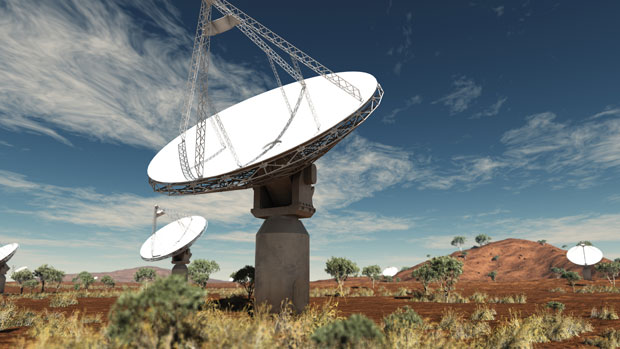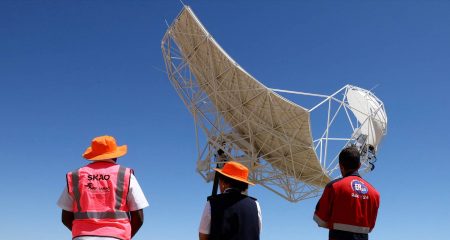
The Square Kilometre Array (SKA) is unlikely to win a Nobel prize, but will give deeper understanding to phenomena such as dark matter and how the universe started.
Vishnu Vejjala, research chair in theoretical particle cosmology at the University of the Witwatersrand, said the US$2bn SKA was simply too large a project to win Nobel prizes.
“Large experiments these days are disadvantaged when it comes to winning Nobel prizes. You have thousands of people working on one project. The Nobel is usually awarded to teams of three people at most.”
The measure of success for the SKA, which would be the world’s most powerful radio telescope, would be the way it resolved outstanding problems in physics — like how galaxies were formed and secrets around “dark matter”, Vejjala said.
Other projects and satellite missions are collecting similar data to what the SKA will collect, but the real benefit of the telescope will be the scale of information it picks up.
“The SKA lets us collect large amounts of data on a wide scale at different radio wavelengths. It is able to see things in greater detail. The sheer amount of data you are collecting is a positive.”
An organisation such as Nasa would benefit from SKA in the complementary projects it had with the telescope. One of these is Nasa’s Wmap project, which maps cosmic microwave backgrounds.
“If SKA can produce new data, Nasa will go ahead with new experiments such as the Wmap project,” he said.
University of KwaZulu-Natal astronomer Caroline Zunckel, who is a co-participant in the MeerKAT telescope project, said SKA had the potential to discover something “very exciting”.
“The SKA, being considerably more powerful, will certainly deliver exciting results,” she said.
One of the key discoveries the project could make is in “dark energy”. Dark energy, which makes up most of the universe, does not produce light, is not tangible in any way and behaves in the opposite way to normal matter.
“Dark energy is the entity that is causing the universe to expand in an accelerated fashion,” she said.
“We have yet to establish the exact physics behind it, but the SKA could make some real progress [on] dark energy.”
The SKA will also study the formation of planets outside our solar system and would scan for radio signals from extra-terrestrial life.
The SKA site advisory committee said on Friday the project would be split between SA and Australia. Justin Jonas, associate director for science and engineering at the SKA, said the project marked a turning point in Africa as a destination for science and engineering.
SA will construct two of the three SKA receiver components. The SKA would be 50 times more sensitive than the most powerful existing radio telescopes. It will have about 3000 receiving dishes across Southern and East Africa.
SA’s main site will be outside Carnarvon in the Karoo. Australia’s core site will be the Mileura station, about 100km west of Meekathara in western Australia. — Sapa




